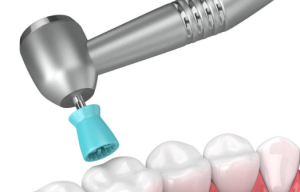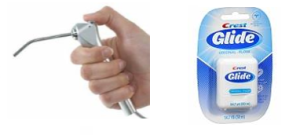
Dental polishing is a common procedure aimed at enhancing the cleanliness and appearance of your teeth. This guide will provide you with a clear understanding of what dental polishing involves, its benefits, potential debates surrounding it, and what to expect during your dental visit.
What is Dental Polishing?
Dental polishing, also known as coronal polishing, involves removing plaque and extrinsic stains from the surfaces of your teeth. However, they cannot remove intrinsic stains. This is done using a low-speed dental handpiece equipped with a rubber cup or a bristle brush and a polishing agent.
When Should I Polish Teeth?
- To improve the aesthetic appearance of teeth by removing extrinsic stains.
- To provide a smooth tooth surface after scaling.
- To emphasize the importance of daily oral hygiene in removing plaque.
When Should Not I Polish Teeth?
- Tooth sensitivity.
- Exposed cementum or dentin.
- Dental restorations.
- Newly erupted teeth.
- Implant abutments.
- Areas of demineralization or inflammation.
- Allergy to polishing paste ingredients.
Is Dental Polishing Actually Good For You?
Dental polishing is often one of the most looked-forward-to parts of a dental visit. Smoothening the tooth surface gives the feeling of being clean and removes some extrinsic staining from the tooth. However, it has been debated if it is actually beneficial to patients overall since scaling teeth is the more important part of teeth cleaning.
Although generally safe, dental polishing can cause minor enamel abrasion, aka the wearing down of the outer surface of your tooth, especially if done too frequently. Over-polishing can potentially wear down the enamel over time, leading to sensitivity and other issues. There is also a risk of irritation for patients with sensitive teeth, exposed cementum or dentin, and certain dental restorations.
As a result, some dental professionals argue that polishing should not be performed at every dental visit, especially for patients with minimal staining or excellent oral hygiene. In these cases, regular brushing and flossing could achieve similar results without the potential risks associated with polishing. At the end of the day, it’s up to the patient to decide if they want polishing or not.
What to Expect During Dental Polishing
Preparation:

The dental hygienist will set up the necessary equipment and ensure infection control protocols are followed. This includes using a prophy angle (a handpiece attachment), a rubber polishing cup, a bristle brush (if needed), and a polishing paste.
Application:

The rubber cup is attached to the handpiece, and a small amount of polishing paste is placed in the cup. The cup is then gently pressed against your teeth, and the handpiece is activated to rotate the cup at a low speed.
The hygienist will use a swiping motion or push points to apply the rubber cup to the tooth surface, ensuring thorough cleaning without damaging the tooth.
For the biting surfaces of your teeth, a bristle brush may be used. The brush is dipped in the abrasive paste and applied to the biting surfaces to remove debris from grooves and pits.
Rinsing and Flossing:

After polishing, your teeth will be rinsed to remove any residual paste, and flossing will be done to clear abrasive materials from between your teeth.
Conclusion
Dental polishing is a common part of maintaining your oral health, providing both aesthetic and practical benefits. However, it is essential to consider the necessity and frequency of polishing on a case-by-case basis to avoid potential risks. Understanding the process and its importance can help you appreciate this aspect of your dental care. If you have any questions or concerns about dental polishing, don’t hesitate to discuss them with your dental hygienist or dentist during your next visit. By staying informed and proactive about your oral health, you can enjoy a cleaner, brighter smile and better overall dental hygiene.
Disclaimer
The contents of this website, such as text, graphics, images, and other material are for informational purposes only and are not intended to be substituted for professional medical advice, diagnosis, or treatment. Nothing on this website constitutes the practice of medicine, law or any other regulated profession.
No two mouths are the same, and each oral situation is unique. As such, it isn’t possible to give comprehensive advice or diagnose oral conditions based on articles alone. The best way to ensure you’re getting the best dental care possible is to visit a dentist in person for an examination and consultation.
SAVE TIME AND MONEY AT ANY DENTIST

Less dental work is healthier for you. Learn what you can do to minimize the cost of dental procedures and avoid the dentist altogether!

